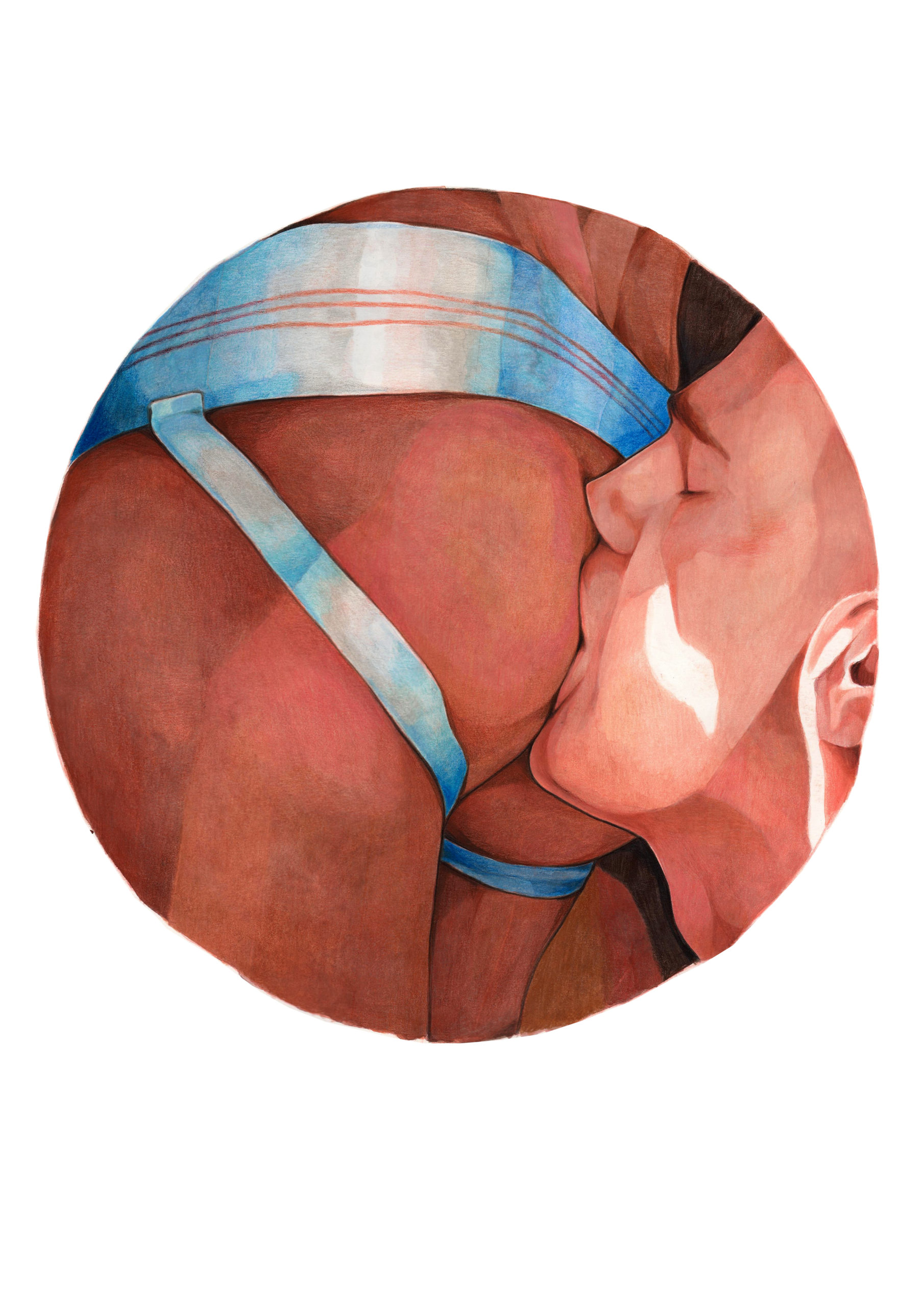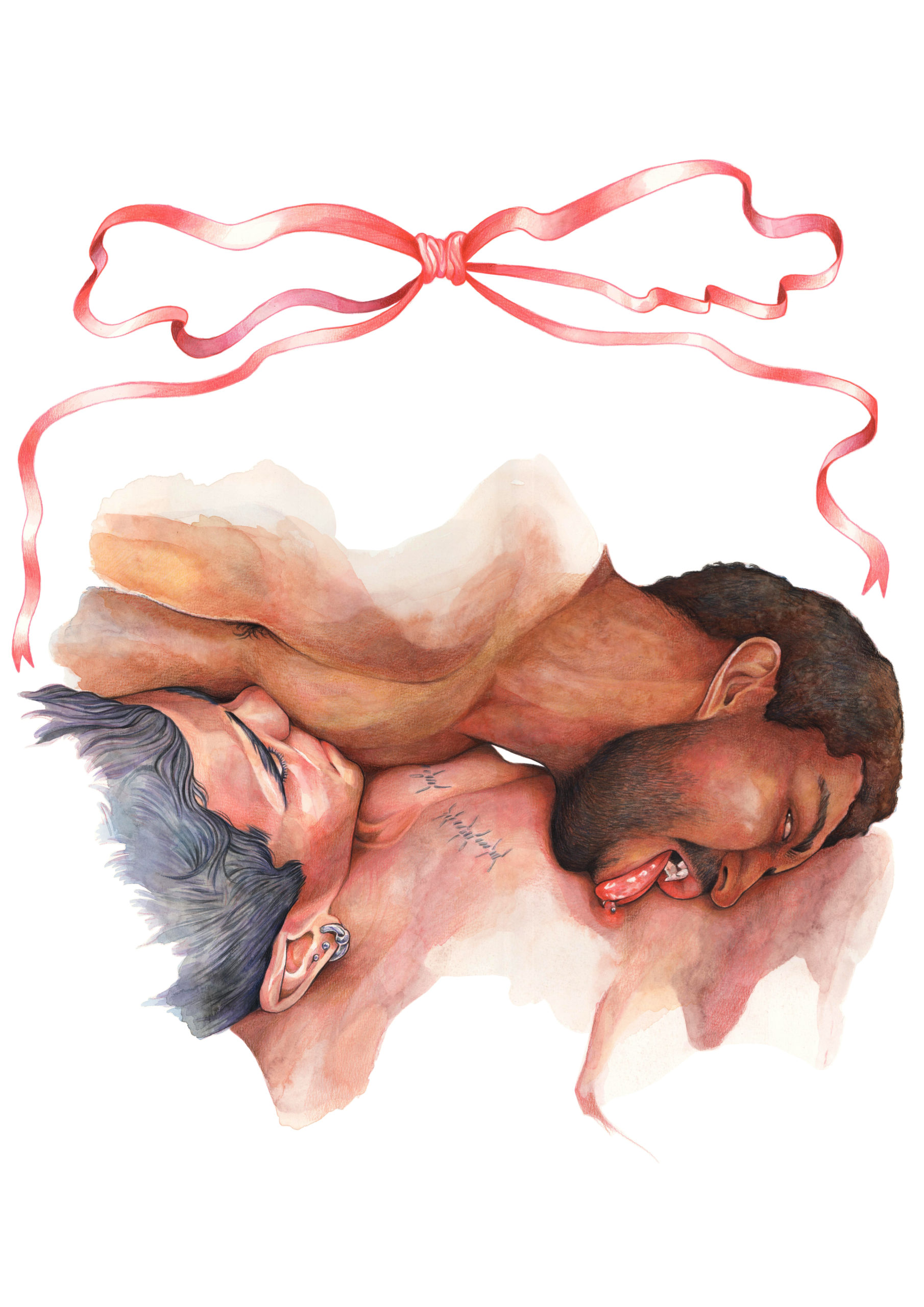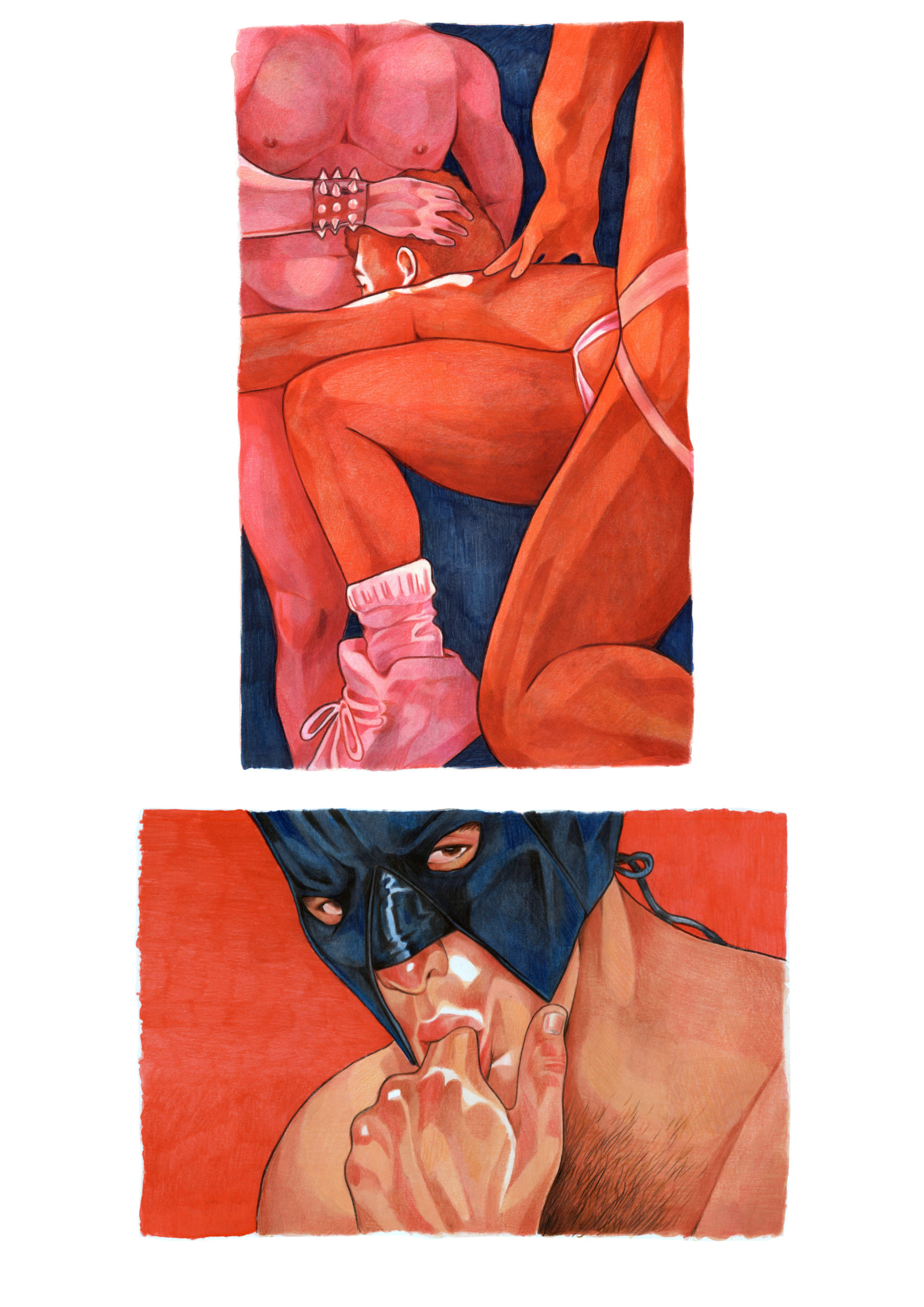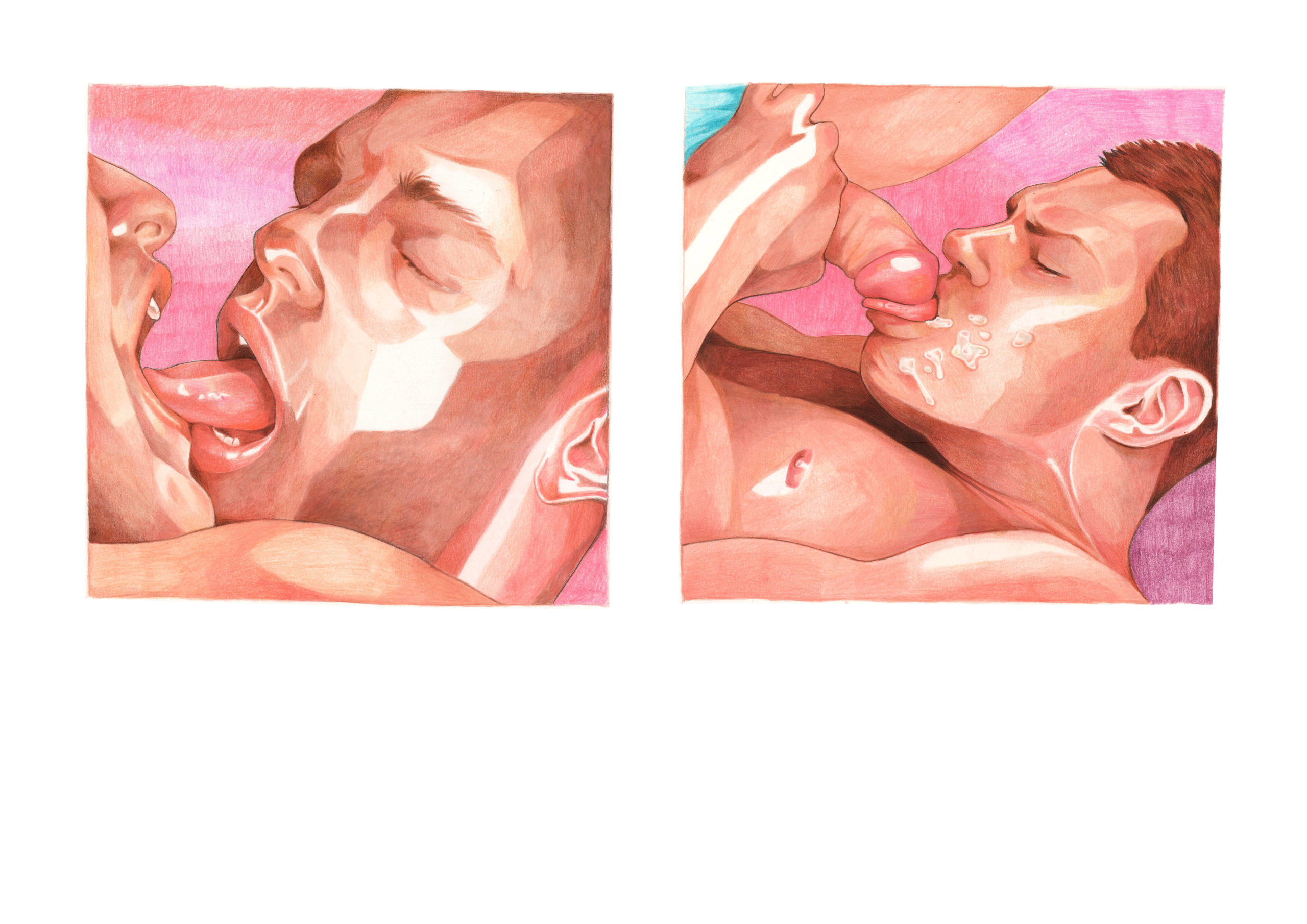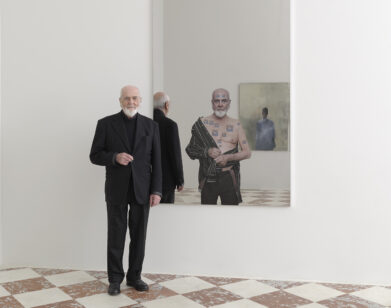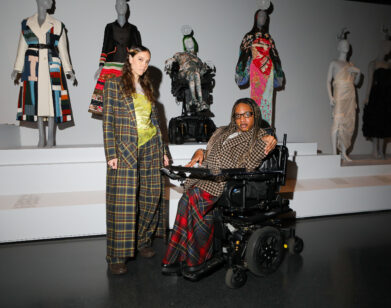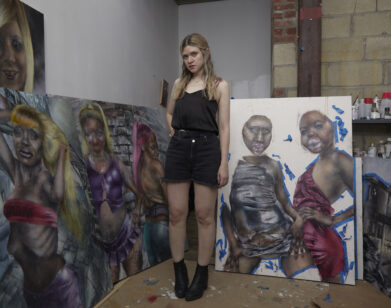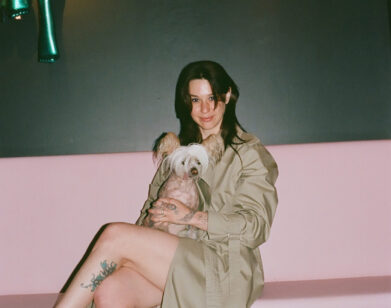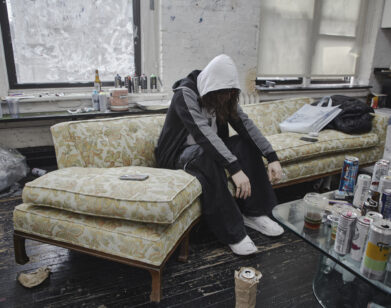art!
Entering “Hole” with Pol Anglada
When it came time to title his first solo exhibition and its accompanying fanzine, Pol Anglada didn’t waste much time before deciding on “Hole.” It’s a fitting moniker, given the show’s subject matter—a survey of racey, fanciful water color-and-pencil drawings that celebrate all manner of orifices. Anglada’s illustrations—of sex scenes featuring glory holes, assholes, and mouth (holes)—are framed like film stills, allowing viewers a brief glimpse into each steamy vignette, while leaving the ending a mystery. “Hole,”which will be on view at Los Angeles’ CULTUREEDIT space through May 10th, invites viewers to explore the soft, vulnerable side of masculinity and sexuality. Here, Anglada breaks down his gay fever dream for us, hole by hole.
———
MITCHELL NUGENT: What was your first foray into art?
POL ANGLADA: Well, I’m Catalonian. I’m from a tiny town close to the Pyrenees, and I grew up in a normal family. My dad’s side worked as electricians, and my mom’s had a small farm. I buried my head when I was a little kid, living in my own world. Any kind of thing that was outside of the norm, or that was a bit odd, would just really blow my mind. I began drawing those things for myself.
NUGENT: Tell me about your interest in comic books as a child.
ANGLADA: I would read my dad’s comic collection from the 1980’s, which had lot of comics [that] had been censored in Spain because of the dictatorship. They were heavily sexual comics, or really fun ones with alien monsters and their young robot girlfriends, skinhead and punk comics, all kinds of things. The images were raw images, the characters were raw. So, all of those [images] really blew my mind.
NUGENT: When you created the illustrations for “Hole,” did you think about comics?
ANGLADA: Comic book action continues over many pages. But when it’s just a single frame, then it’s really the viewer who decides how things started and how they’re going to end. “Hole” is about this sense of voyeurism that is encapsulated in a frame. I’m always interested in exploring intimacy, creating at fake scenarios of connection between two persons with a homoerotic tone.
NUGENT: It’s nice to leave the works open to interpretation–that’s where fantasy is born. I liked, in particular, how you framed the works in circles and squares.
ANGLADA: I enjoy drawing when you start with a frame and then build an image inside of it. I like dwelling in this freedom, in this safe space where you can work on a personal project without boundaries or requirements, and just let go.
NUGENT: I like the embellishments in the works—a bow, or the guy in front of the glory hole with rainbow-colored hair.
ANGLADA: I love the rainbow as a symbol because it’s so tacky, but so joyous. With the pink bows, when I draw male-presenting bodies in sexual or heated situations, I like to sugarcoat it. [It] tends to make the scene feel very light and more vulnerable.
NUGENT: To that point, why is it important to touch upon the more fragile, sensitive side of homoeroticism in your work?
ANGLADA: There are a lot of social constructions around gender, especially when it comes to sexuality. A huge reference for me is Tom of Finland. In his depiction of bodies–the leather, the scenarios. I worked these elements into “Hole”, the use of pink, the bows, the high stockings, and the point of view of the action going on. I always try to come up with a more subtle approach to the question: what is masculine? A big hairy man? What if he’s naked and confident and wearing pink stockings with a bow on them?
NUGENT: I think to a wider audience, masculinity is very clearly defined. But your use of color and these embellishing touches opens it up to interpretation.
ANGLADA: A bit bimbo, in a way. Taking the sexual energy of a bimbo and making it genderless. The same sugary joy, playfulness, softness, brightness—but set in a sex dungeon.
NUGENT: Was that your intention for the name of the exhibition and zine?
ANGLADA: I love the sound of “Hole.” As I was saying before, it comes from growing up with my dad’s comics, listening to lots of Spanish punk music when I was a teenager, and listening to Hole with Courtney Love. It’s this riot grrrl attitude, as well as the hole of emotions, of sexual desire. More literally, it’s about an asshole, a mouth hole, a glory hole.
NUGENT: When I first saw your works, they reminded me of Andy Warhol’s “Sex Parts” series. When selling the works, Warhol told his business associates to call the nude portraits “landscapes” as if they were depictions of the countryside. I always thought that was a funny way to describe the human form, but when I look at your series, the way you celebrate the body, these paintings really are like landscapes.
ANGLADA: When drawing bodies, it’s a game of positive and negative, no? Which faces go in, which parts go out, which curves? There’s asomething about the curve of a back dimple above a bum, or the curve of a belly going into a pelvis, going into to a genital area. Bodies, from a sexual perspective–shoulders, nipples, bums, thighs–are landscapes, and it’s about where you go on your road trip before getting to the climax. [Drawing] a chiseled ab muscle is enjoyable, but it’s always a bit more rewarding [to draw] beautiful curves.
NUGENT: A lot of people say that cruising is dead, but you awaken its spirit here. There’s so much vulnerability when you cruise. You put yourself in a lot of different circumstances that could be dangerous, or could be pleasurable. But “Hole” captures something very utopian and amorous about the act of cruising.
ANGLADA: There’s the same feeling about sex bars or sex clubs. A few years ago, I was in San Francisco for work, and Folsom [Street Fair] was going on. It’s a celebration of the body and unconditional freedom, and everyone was living their fantasy. If you were a furry, if you were into spanking, whatever you were into, there was no judgment. It’s the safeness of queer communities–of celebrating openness and pleasure in a consensual way, but pushing the limits as far as you want to go.
NUGENT: What do you hope viewers take from the exhibition?
ANGLADA: I hope that everyone really enjoys the artworks. But for me, the “Hole” fanzine is a token of remembrance. Back in the day, [books or fanzines] were how these erotic images would circulate. With the zine, people get to enjoy the work in a more intimate moment in their homes.
NUGENT: I think the way that we consume imagery online means our moment of interest last just seconds before we’re onto the next thing. With physical media, we interact so differently.
ANGLADA: Ultimately [that feeling] of laying hands on my dad’s comics made me crazy excited—that’s still how I feel when I put my hands on a new book. It’s this thirst, it awakens something on you, and if that happens to a bit kinky, or to helps you learn more about yourself, then even better.

